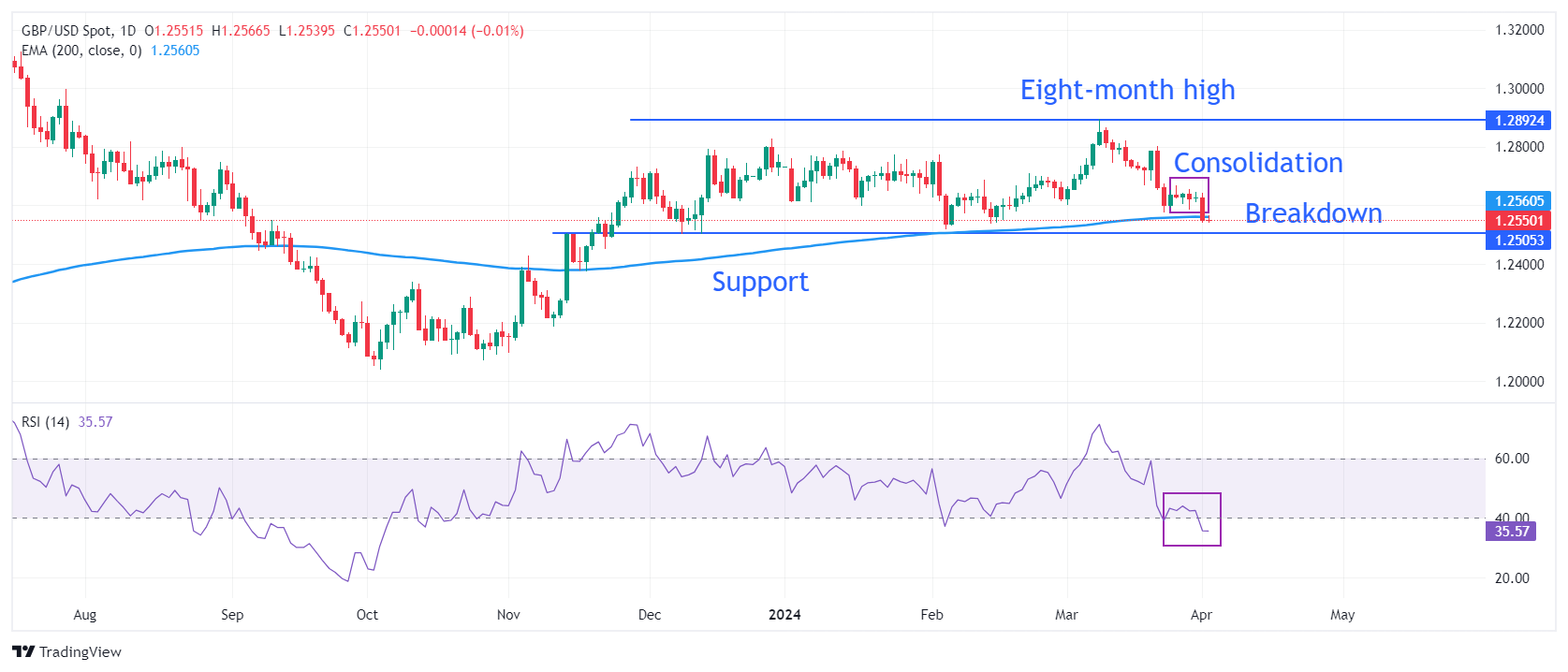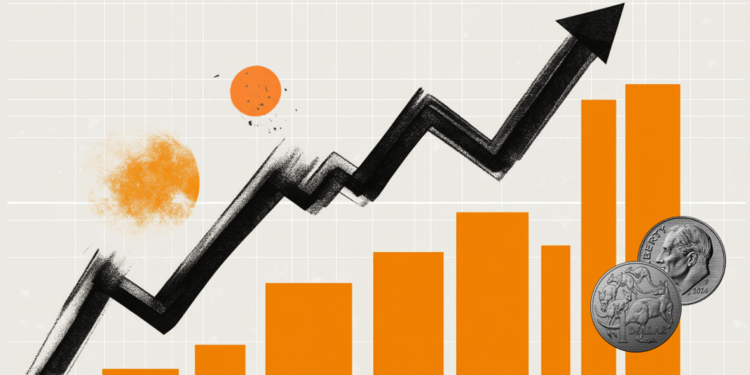- The British pound rebounds, although moderating British inflation keeps its overall appeal weak.
- The upbeat S&P Global/CIPS UK Manufacturing PMI provided support to the British Pound.
- UK shop price inflation grew by 1.3% in March, the slowest pace since December 2021.
The British Pound (GBP) finds support near a low around 1.2540 in Tuesday's London session after S&P Global/CIPS reported an upbeat manufacturing PMI for March. The UK manufacturing PMI returns to the expansionary path, standing above the 50.0 threshold that separates expansion from contraction, at 50.3, above expectations and the previous reading of 49.9.
Rob Dobson, Director of S&P Global Market Intelligence, said: “The end of the first quarter saw the UK manufacturing sector recover from its recent stagnation. Production and new orders returned to growth, albeit hesitantly, after a year of declines, and the main impetus for expansion came from stronger domestic demand.
The overall attractiveness of the GBP/USD pair remains weak, mainly due to weak market sentiment. The short-term outlook for the Pound is pessimistic, as traders distance prospects for the Federal Reserve's (Fed) first rate cut, scheduled for its June meeting, after having kept rates rising for more than two years. . The prospect of higher interest rates for longer than expected benefits the US dollar and weighs on the pair.
The strong recovery of the US manufacturing sector, showing a solid economic outlook, forced traders to withdraw their bets on rate cuts for June. Higher demand from the US manufacturing sector indicates the strength of household spending, allowing Fed officials not to rush into cutting interest rates. The optimistic economic outlook gives the Fed more time to observe inflation data before moving to cut rates.
The US Dollar Index (DXY) posts a new four-month high slightly above 105.00 amid cheery safe haven bids and good prospects for the US economy. More uncertainty is expected in global markets as the US Bureau of Labor Statistics (BLS) releases March Non-Farm Payrolls (NFP) data on Friday. But before that, investors will focus on the US JOLTS Job Openings data for February, which will be released at 14:00 GMT.
Daily Market Moves Summary: Pound Finds Support After UK Factory Data
- The British Pound looks vulnerable near the low around 1.2540 due to multiple headwinds. Slowing inflation in the UK and poor market mood have weighed on the Pound.
- The British Retail Consortium (BRC) reported on Tuesday that UK shop price inflation rose 1.3% in March, its slowest pace in more than two years. This represents a slowdown compared to the 2.5% increase recorded in February. Inflation fell due to the fall in prices of food and non-food products. Non-food prices rose just 0.2%, up from 1.3% the previous month, while food prices rose 3.7%, up from 5.0% previously.
- Helen Dickinson, chief executive of the BRC, said that strong competition among retailers to lower prices for their customers has reduced price inflation in shops to its lowest level since December 2021. However, she warned that the Rising cost pressure could jeopardize progress in reducing inflation.
- Lower retail price inflation could come as a relief to Bank of England policymakers, giving them ground to cut interest rates after keeping them at high levels for more than two years. Currently, the market expects the BoE to start reducing interest rates from the June meeting.
- Meanwhile, market sentiment has turned bearish as traders have reduced expectations that the Federal Reserve will cut interest rates in June. Prospects for a Fed rate cut that month were reduced after the US Institute for Supply Management (ISM) released better-than-expected March manufacturing PMI data. The manufacturing PMI was above the 50.0 threshold for the first time after 16 consecutive months of contraction. The US manufacturing sector appears to be recovering from the high interest rate environment, which has weighed on activity over the past year and a half.
Technical Analysis: The British Pound is trading around the 200 DMA

The British Pound presents a downward break of the consolidation formed in the range between 1.2575 and 1.2675 last week. Cable appears vulnerable as it is trading near the 200-day EMA at 1.2568, indicating weak long-term demand.
On a longer time frame, horizontal support from the December 8 low at 1.2500 could provide further cushion to the British pound. Meanwhile, rallies are expected to remain limited near an eight-month high around 1.2900.
The 14-period Relative Strength Index (RSI) falls below 40.00 points. If it remains below this level, bearish momentum will be activated.
Frequently asked questions about interest rates
What are interest rates?
Financial institutions charge interest rates on loans from borrowers and pay them as interest to savers and depositors. They are influenced by basic interest rates, which are set by central banks based on the evolution of the economy. Typically, central banks are mandated to ensure price stability, which in most cases means targeting an underlying inflation rate of around 2%.
If inflation falls below the target, the central bank can cut base interest rates, in order to stimulate credit and boost the economy. If inflation rises substantially above 2%, the central bank typically raises core lending rates to try to reduce inflation.
How do interest rates influence currencies?
In general, higher interest rates help strengthen a country's currency by making it a more attractive place for global investors to park their money.
How do interest rates influence the price of Gold?
Higher interest rates influence the price of Gold because they increase the opportunity cost of holding Gold instead of investing in an interest-bearing asset or depositing cash in the bank.
If interest rates are high, the price of the US Dollar (USD) usually rises and, since Gold is priced in dollars, the price of Gold falls.
What is the federal funds rate?
The federal funds rate is the overnight rate at which U.S. banks lend to each other. It is the official interest rate that the Federal Reserve usually sets at its FOMC meetings. It is set in a range, for example 4.75%-5.00%, although the upper limit (in this case 5.00%) is the figure quoted.
Market expectations about the Federal Reserve funds rate are tracked by the CME's FedWatch tool, which determines the behavior of many financial markets in anticipation of future Federal Reserve monetary policy decisions.
Source: Fx Street
I am Joshua Winder, a senior-level journalist and editor at World Stock Market. I specialize in covering news related to the stock market and economic trends. With more than 8 years of experience in this field, I have become an expert in financial reporting.







